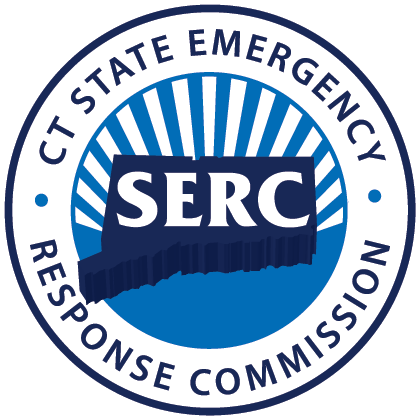Laws and Regulations
The Emergency Planning and Community Right-to-Know Act (EPCRA) was enacted by Congress on October 17, 1986 as an outgrowth of concern over the protection of the public from chemical emergencies and dangers.
State Laws Defining the EPCRA Program
Federal Laws Defining the EPCRA Program
- Emergency Planning and Community Right-to-Know Act - Public Law 99-499, October 17, 1986
- Emergency Planning and Community Right-to-Know Act; Amendments to Emergency Planning and Notification; Emergency Release Notification and Hazardous Chemical Reporting , Final Rule (PDF)
- Amendments to EPCRA – America’s Water Infrastructure Act | US EPA
Note: 40 CFR Part 355 means that the federal regulation is in Volume 40, Part 355 of the Code of Federal Regulations. EPA is finalizing changes to the Emergency Planning Notification, Emergency Release Notification and Hazardous Chemical Reporting regulations that were proposed on June 8, 1998. This final action (Final Rule-December 3, 2008) includes minor revisions to the Emergency Planning Notification, Emergency Release Notification and Hazardous Chemical Reporting regulations, codifying statutory requirements, and clarifying certain interpretations and policy statements that EPA has provided to the regulated community. The Agency is in the process of finalizing the plain language format of the regulations.
Other Relevant Regulations, Rules and Websites
- Clean Air Act, Section 112 (r) - Risk Management Plans
- Chemical Facility Anti-Terrorism Standards Interim Final Fuel (6 CFR Part 27) and Appendix A: DHS Chemicals of Interest
- National Fire Protection Agency - NFPA 1600 Standard on Disaster/Emergency Management and Business Continuity Programs
- Occupational Safety and Health Administration's (OSHA), Hazard Communication Standard
-
The Oil Pollution Act (OPA) of 1990 includes national planning and preparedness provisions for oil spills that are similar to EPCRA provisions for EHSs. For further information regarding Oil Pollution Prevention Regulation Overview, go to EPA's website at www.epa.gov/emergencies/content/lawsregs/opprover.htm
Toxics Release Inventory (TRI)
- TRI Data: www.epa.gov/toxics-release-inventory-tri-program
- TRI Explorer Fact Sheets by State: https://enviro.epa.gov/triexplorer/tri_factsheet_search.searchfactsheet?
- Some TRI Data is also available on the CT Open Data Portal https://data.ct.gov/
CT Statutory and Regulatory References and Guidance Regarding other State Reporting Requirements that do not fall under EPCRA
- CGS 22a-450: Report of Discharge, "Any and Immediate" - DEEP Guidance
- RCSA 22a-450-1 - 22a-450-6 CT Release Reporting Regulations and information
- CGS 22a-451: Responsibility, "Strict Liability" - Statutory Reference
- CGS 22a-6u: Reporting Significant Environmental Hazards - DEEP Guidance
- CGS 19a-330: Carcinogenic Substance - Statutory Reference
- CGS 29-307a: Notice to Local Fire Marshal - Statutory Reference
Other Laws that Provide Similar Information
The Oil Pollution Act (OPA) of 1990 includes national planning and preparedness provisions for oil spills that are similar to EPCRA provisions for EHSs. Plans are developed at the local, state and federal levels. The OPA plans offer an opportunity for LEPCs to coordinate their plans with area and facility oil spill plans covering the same geographical area. For further information regarding Oil Pollution Prevention Regulation Overview, go to EPA's website at www.epa.gov/emergencies/content/lawsregs/opprover.htm .
The 1990 Clean Air Act Amendments required the EPA and OSHA to issue regulations for chemical accident prevention. Facilities that have certain chemical above specified threshold quantities are required to develop a risk management program to identify and evaluate hazards and manage those hazards safely. Facilities subject to EPA's risk management program rules must submit a risk management plan (RMP) summarizing its program. For further information regarding RMP guidance, go to EPA's website at www.epa.gov/emergencies/guidance.htm#rmp .
Access to Public Records
The EPCRA law provides provisions for the public to gain access to facility information and requires municipal, state and federal agencies to retain specific records for a period of time. For more information regarding the law, visit our webpage that describes the Community Right-to-Know provisions.
Further Information and Contacts
or contact
State Emergency Response Commission
c/o Department of Energy and Environmental Protection
Emergency Response and Spill Prevention Division
79 Elm Street
Hartford, CT 06106-5127
860-424-3373
DEEP.CTEPCRA@ct.gov
State Emergency Response Commission
c/o Department of Energy and Environmental Protection
Emergency Response and Spill Prevention Division
79 Elm Street
Hartford, CT 06106-5127
860-424-3373
DEEP.CTEPCRA@ct.gov
Content Last Updated December 7, 2022

